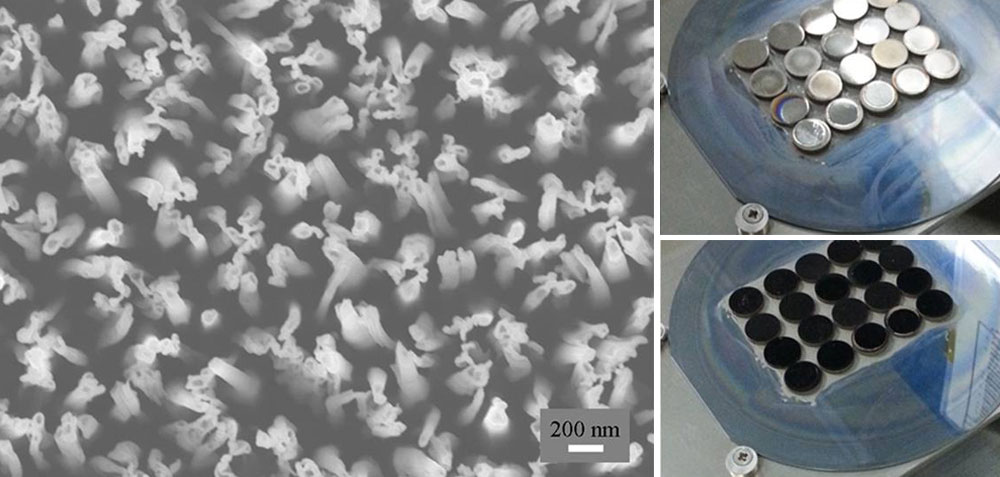
Chlorine used with titanium to create joint replacements that resist infection
Titanium orthopedic implants – such as hip joints, knee joints, screws and plates – are widely used to replace a joint or bone, or to support a damaged bone. These can cause painful and dangerous post-surgical infections in patients, requiring antibiotic use or follow-up surgeries.
Chlorine chemistry is used routinely to process titanium ore. Now researchers from the Indian Institute of Science in Bangalore are exploring the use of chlorine to treat the surface of titanium to kill bacteria (SciDev.net, February 8; Scientific Reports, January 23).
The chlorine-based etching process produces nanostructures that kill bacteria on contact by mechanically rupturing them. The treated surfaces mimic the properties of the wings of insects such as cicadas, and may provide next-generation biomaterials for orthopedic implants.
The process turns the shiny titanium surface black, yet does not affect its ability to bond with human bones and tissues when implanted – a property that is essential for surgical success and patient recovery.
The next step will be to do more tests of the treated titanium surface, and explore strategies for clinical use, according to the researchers. This method may also have potential in dental implant and heart stent procedures.
